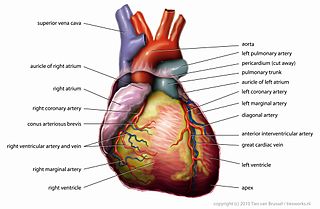The below is from an American Heart Association Apr. 15, 2020 news release.
Exposure to heavy smoke during recent California wildfires raised the risk of out-of-hospital cardiac arrests up to 70%, according to new research published today in the Journal of the American Heart Association, the open access journal of the American Heart Association.
Cardiac arrest occurs when the heart abruptly stops beating properly and can no longer pump blood to vital organs throughout the body. While often referred to interchangeably, cardiac arrest is not the same as a heart attack. A heart attack is when blood flow to the heart is blocked, and sudden cardiac arrest is when the heart malfunctions and suddenly stops beating unexpectedly. A heart attack is a “circulation” problem and sudden cardiac arrest is an “electrical” problem. Out-of-hospital cardiac arrests (OHCAs) are more dangerous because they can lead to death within minutes if no one performs CPR or uses a defibrillator to shock the heart back into a normal rhythm.
The natural cycle of large-scale wildfires is accelerating and exposing both rural and urban communities to wildfire smoke, according to the study. While adverse respiratory effects associated with wildfire smoke are well established, cardiovascular effects are less clear.
“In recent decades, we experienced a significant increase in large-scale wildfires, therefore, more people are being exposed to wildfire smoke. In order to respond properly, it is important for us to understand the health impacts of wildfire smoke exposure,” said study author Ana G. Rappold, Ph.D., a research scientist at the U.S. Environmental Protection Agency’s Center for Public Health and Environmental Assessment in the Office of Research and Development.
Researchers examined cardiac arrests during 14 wildfire-affected counties in California between 2015 and 2017, using information submitted to a health registry established by the Centers for Disease Control and Prevention, and the Cardiac Arrest Registry to Enhance Survival (CARES). Smoke density exposure was rated as light, medium or heavy according to mapping data from the National Oceanic and Atmospheric Administration. The researchers compared smoke exposure on the day of the OHCA to the exposure on the same day of the week in the 3 prior weeks. They also compared the exposure 1, 2 and 3 days before the OHCA to the exposure on the corresponding days in 3 weeks prior to the cardiac arrest.
The analysis found that the risk of out-of-hospital cardiac arrests:
- increased on days rated as heavy smoke density and for several days afterwards, with the highest risk (70% higher than on days with no smoke) on the second day after smoke exposure;
- increased among both men and women and in people age 35 and older exposed to heavy smoke; and
- increased in communities with lower socioeconomic status (20% or more people living below the poverty line) with both medium and heavy smoke exposure.
“Particulate matter from smoke that is inhaled can penetrate deeply into the lungs, and very small particles may cross into the bloodstream. These particles can create an inflammatory reaction in the lungs and throughout the body. The body’s defense system may react to activate the fight-or-flight system, increasing heart rate, constricting blood vessels and increasing blood pressure. These changes can lead to disturbances in the heart’s normal rhythm, blockages in blood vessels and other effects creating conditions that could lead to cardiac arrest,” Rappold said.
Although the researchers had no information about the actions taken by individuals, the increased risk they found in people living in lower-income communities might reflect less access to strategies to reduce exposure. Previous studies have shown that there are more respiratory problems in lower-income communities and worsening congestive heart failure in response to wildfire smoke exposure.
“People in a higher socioeconomic status group who have pre-existing cardiopulmonary conditions may be better able to take effective action to decrease exposure, such as staying indoors, using portable air filters or using effective respirator masks. They may also be more likely to live in homes with air conditioning and efficient air filtration,” Rappold said.
“While other studies have found that older adults are more affected, we also observed elevated effects among middle-aged adults (aged 35-64). It is possible that this population may not be aware of their risk and may not have flexibility to discontinue activities that involve exertion and exposure during wildfire smoke episodes,” concluded Rappold.
To reduce exposure to wildfire smoke, researchers advise people to stay indoors with doors and windows closed, to use high-efficiency air filters in air conditioning systems, avoid exertion, and consider seeking shelter elsewhere if the home does not have an air conditioner and it is too warm to stay inside.
The small sample size limited the researchers’ ability to determine how the risks of smoke exposure might differ among people of different ages and genders. Individuals with personal health questions or concerns should consult with their doctor, researchers said.
This post was last revised on Jul. 9, 2020 @ 3:01 p.m. Pacific Daylight Time.
Published by Alan Kandel
